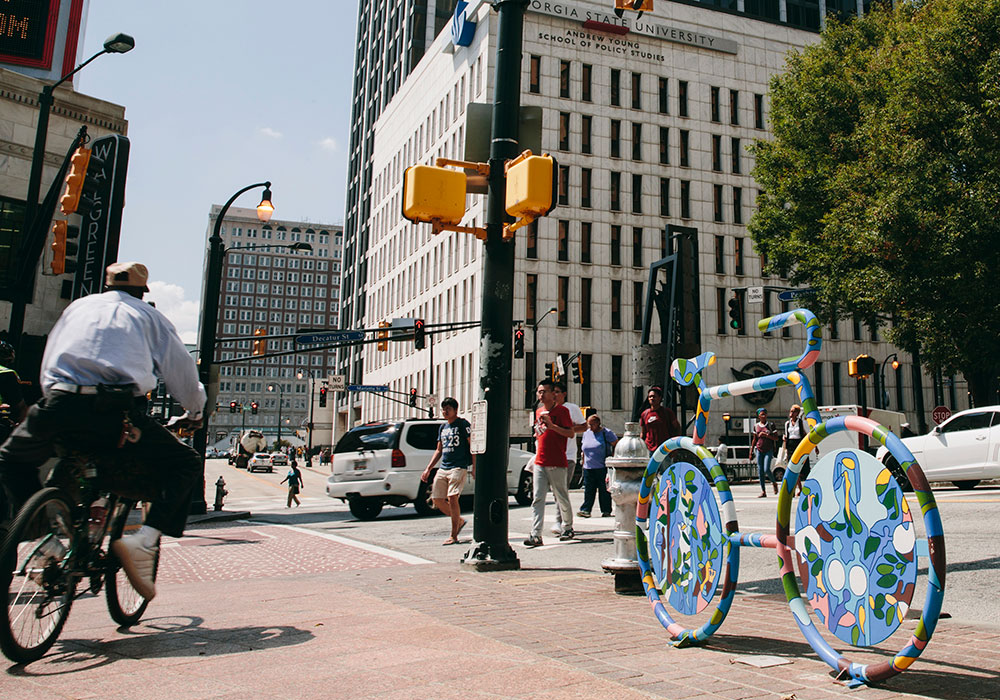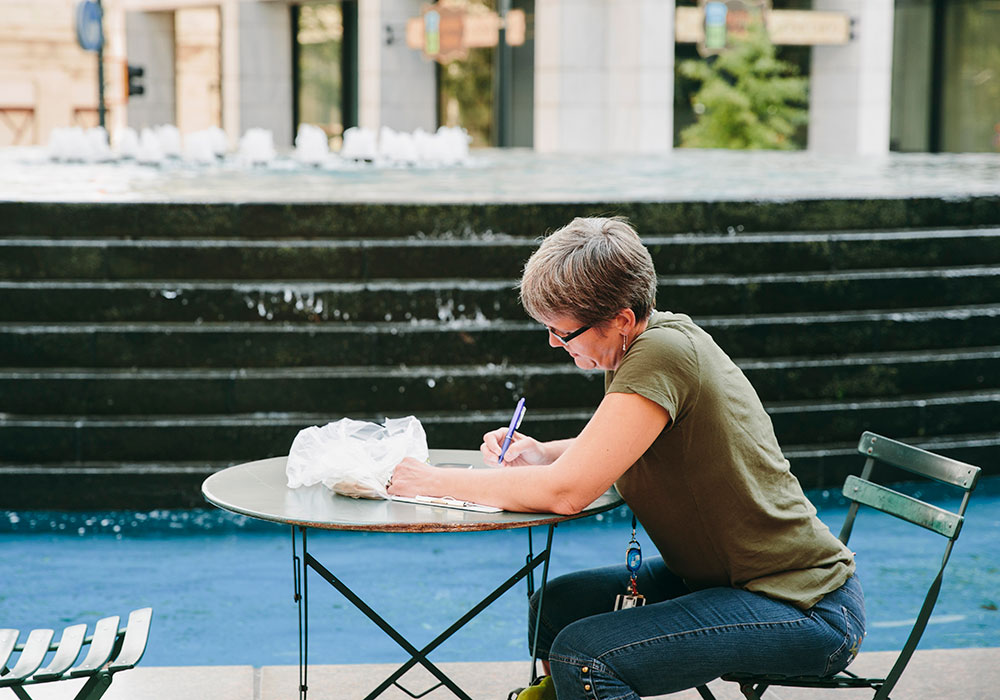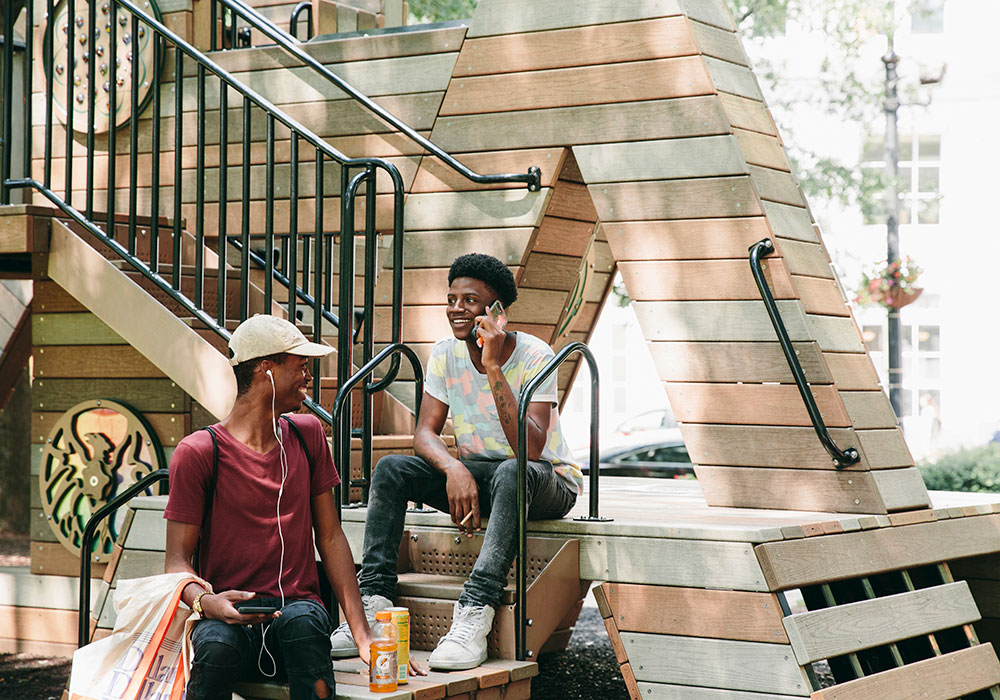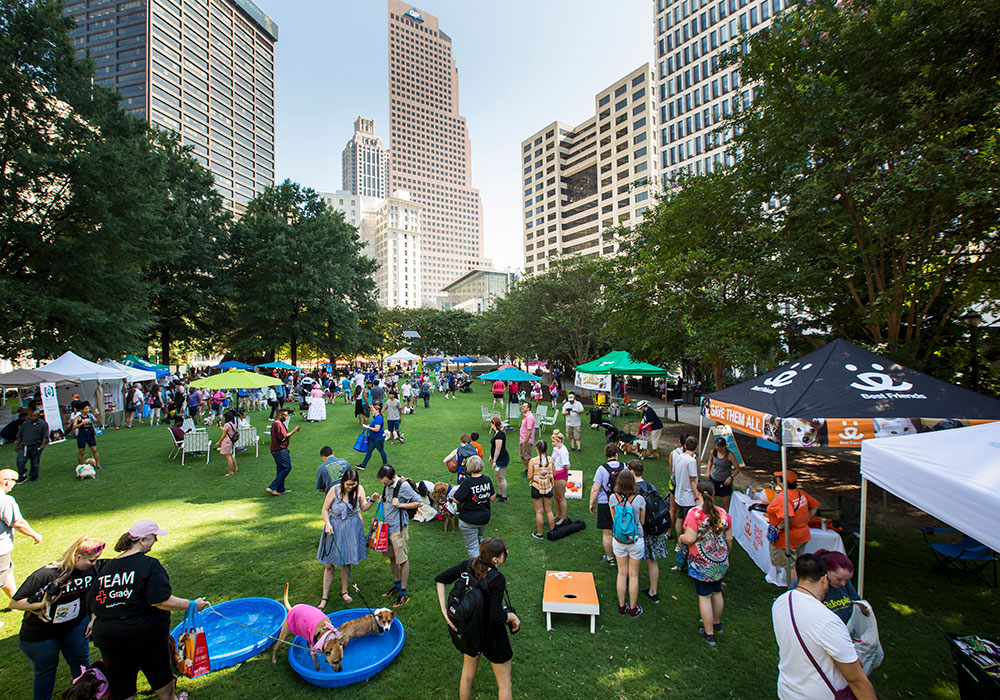Planning December 2020
How-To
4 Steps to Creating Inclusive, Anti-Racist Third Spaces
Help community connections flourish.
By Nicolia Robinson, AICP
When American urban sociologist Ray Oldenburg first coined the concept of a "Third Place" in the 1980s, he defined it as the "level, neutral place between work and home that individuals frequent for social connection to their community." He understood the critical relationship between fostering informal gathering places — parks, arcades, malls, libraries — and maintaining a democratic civil society. People crave chances to spark conversation, cultivate culture, and share lifelong lessons with the next generation.
In a perfect world, Oldenburg's third place principles would create spaces where everyone felt welcome. But in reality, there's much work to be done on that front. Traditionally, inequitable investment in public spaces have led to a lack of public outdoor spaces in communities of color compared to white, affluent communities. Furthermore, the spaces that have been designed have lacked diverse representation reflective of the communities they serve. The way we define and design public outdoor third places must evolve to be intentionally inclusive, community driven, and anti-racist.

Broad Street Boardwalk in Atlanta offers movable furniture, which allows visitors to adapt the space to their own uses and needs. Photo by Justin Chan Photography.
The pandemic highlights need for inclusive space
Recent events have illuminated this like never before. The coronavirus pandemic has highlighted the need for outdoor third places with room for social distancing, while racial tensions have activated public spaces with large-scale protests and solo demonstrations in public spaces across the U.S. It is imperative that municipalities provide safe public places for all without blockage or constraint.
Here are four key guidelines to designing an anti-racist third place:
1. Remember: It's All About Location

Third places benefit from convenience and accessibility, whether by car, bike, foot or public transit. Photo by Erin Sintos.
The old real estate adage still holds true today. Convenience and accessibility, whether by car, bike, foot, or public transportation, are the first priorities when creating or enhancing an outdoor third place. If it's not close to where people work and live or easy for them to get to, they won't build a habit of coming regularly — or they may feel intimidated to visit at all. Consider, too, where people are already gathering naturally, and how the existing space could be enhanced to be more accessible and welcoming.
2. Keep It Comfortable

Flexible and movable furniture allows people to create their own social microcosm. Photo by Erin Sintos.
Offer a wide spectrum of scale and seating options that appeal to both individuals and the masses. Whether paved concrete or green spaces, round tables for group conversation, or benches for solo respite, providing variety ensures all people can feel welcome and use the space as they choose, be it exercising with a boot camp class or exercising their First Amendment rights. Furniture should be flexible, foldable, and movable — let people create their own little social microcosm to fit what they need, when they need it. Ample lighting, including natural sunlight and shading during the day and artificial light at night, can impact how comfortable people feel in the space, too. During the cooler months, consider ways to add outdoor heating or other design features to extend usability.
3. Facilitate Conversations Across All Channels — Digitally and Physically

Conversation — whether in person or digital — is one of the main activities of a third place. To help make those connections equitable, free and unlimited wi-fi is critical. Photo by Erin Sintos.
Oldenburg originally described conversation as the main activity of a third place. While still true, conversation today isn't limited to speaking with the person sitting next to you; it can also mean FaceTiming a friend who lives across the country. According to a study by the Federal Trade Commission, around 19 million Americans lack access to adequate wifi speeds, so providing free and unlimited high-speed internet is critical to advancing equity today. In a year where many students and employees are learning and working remotely, third spaces can help fill this void and level the playing field.
4. Engage the Community in Planning, Programming, and Partnerships

Playful events like the Doggy Con Pet Parade and Costume Contest in Atlanta's Woodruff Park allow people from all walks of life to come together. Photo by Raftermen.
According to Oldenburg's idea of a third place, the mood should be playful. For an anti-racist third place, this idea could translate to fostering a place that promotes democracy and allows people to connect with others. It is the meeting point for protest and celebration, and where individuals from all walks of life can share and connect. To achieve this, we must ask: Who are we programming for? And who better to ask than the community itself?
If a group gathers on a corner every day at 5 p.m. to play chess, it might be the place to install chess boards and provide rentable games, so others feel comfortable joining. Since many of these public spaces are municipally owned and may have low budgets, consider partnerships with local organizations to activate the space. Spreading out events based on feedback — like yoga classes, family outdoor movie nights, and live jazz music throughout the day and week — can help ensure that different populations continue to interact with the space and each other.
At the end of the day, even with all the right design considerations, programming can be the deciding factor for making all people feel welcomed. Make choices with local input. And don't forget: Some unprogrammed space — space to just be yourself, exactly as you are — is vital, too.
Nicolia Robinson is a senior associate at design firm Cooper Carry, where she has successfully managed community and downtown revitalization projects to reflect her belief that connective design must encompass not only a physical perspective, but a social and economic one, too. She lives in Atlanta.


